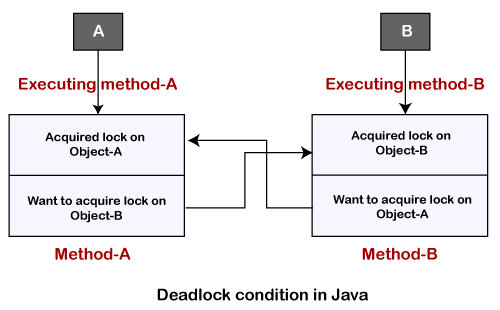

The method of our interest is findMonitorDeadlockedThreads, or, if you are using Java 6,findDeadlockedThreads. I recommend you to check all of the methods as there are many useful operations for monitoring the performance of your application in case you are not using an external tool. Java 5 introduced ThreadMXBean - an interface that provides various monitoring methods for threads. Although some statical analysis libraries exist that can help us detect the possible deadlocks, it is still necessary to be able to detect them during runtime and get some information which can help us fix the issue or alert us so we can restart our application or whatever.ĭetect deadlocks programmatically using ThreadMXBean class


The reason for this is it’s not practical to test all possible interleavings of a program’s threads. To make things worse, deadlocks usually manifest in production under the heaviest load, and are very hard to spot during testing. They can be very hard to detect during development, and they usually require restart of the application in order to recover. locked 0x00000007ac3b1970 (a )ĭeadlocks are situations in which two or more actions are waiting for the others to finish, making all actions in a blocked state forever. : BLOCKED (on object monitor)Īt $n(DeadLockSimulator.java:29)
#Java deadlock with 1 bject code#
Thread dump captured on the above code would look like: In the above code following is the execution path of ‘FirstThread‘:įollowing is the execution path of ‘SecondThread‘: Private static class FirstThread extends Thread Public static Object Lock2 = new Object() Public static Object Lock1 = new Object() Here is a sample code which simulates deadlock condition in-between two threads: If deadlock happens in a JVM, the only way to recover from the situation is to restart the JVM.


 0 kommentar(er)
0 kommentar(er)
